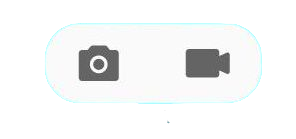卡片事件能力说明
ArkTS卡片中提供了postCardAction()接口用于卡片内部和提供方应用间的交互,当前支持router、message和call三种类型的事件,仅在卡片中可以调用。

接口定义:postCardAction(component: Object, action: Object): void
接口参数说明:
| 参数名 | 参数类型 | 必填 | 参数描述 |
|---|---|---|---|
| component | Object | 是 | 当前自定义组件的实例,通常传入this。 |
| action | Object | 是 | action的具体描述,详情见下表。 |
action参数说明:
| Key | Value | 样例描述 |
|---|---|---|
| “action” | string | action的类型,支持三种预定义的类型:“router”:跳转到提供方应用的指定UIAbility。“message”:自定义消息。触发后会调用提供方FormExtensionAbility的onFormEvent()生命周期回调。“call”:后台启动提供方应用。触发后会拉起提供方应用的指定UIAbility(仅支持launchType为singleton的UIAbility,即启动模式为单实例的UIAbility),但不会调度到前台。提供方应用需要具备后台运行权限(ohos.permission.KEEP_BACKGROUND_RUNNING)。 |
| “bundleName” | string | “router” / “call” 类型时跳转的包名,可选。 |
| “moduleName” | string | “router” / “call” 类型时跳转的模块名,可选。 |
| “abilityName” | string | “router” / “call” 类型时跳转的UIAbility名,必填。 |
| “params” | Object | 当前action携带的额外参数,内容使用JSON格式的键值对形式。"call"类型时需填入参数’method’,且类型需要为string类型,用于触发UIAbility中对应的方法,必填。 |
postCardAction()接口示例代码:
Button('跳转').width('40%').height('20%').onClick(() => {postCardAction(this, {'action': 'router','bundleName': 'com.example.myapplication','abilityName': 'EntryAbility','params': {'message': 'testForRouter' // 自定义要发送的message}});})
Button('拉至后台').width('40%').height('20%').onClick(() => {postCardAction(this, {'action': 'call','bundleName': 'com.example.myapplication','abilityName': 'EntryAbility','params': {'method': 'fun', // 自定义调用的方法名,必填'message': 'testForCall' // 自定义要发送的message}});})
使用router事件跳转到指定UIAbility
在卡片中使用postCardAction接口的router能力,能够快速拉起卡片提供方应用的指定UIAbility,因此UIAbility较多的应用往往会通过卡片提供不同的跳转按钮,实现一键直达的效果。例如相机卡片,卡片上提供拍照、录像等按钮,点击不同按钮将拉起相机应用的不同UIAbility,从而提升用户的体验。

通常使用按钮控件来实现页面拉起,示例代码如下:
-
在卡片页面中布局两个按钮,点击其中一个按钮时调用postCardAction向指定UIAbility发送router事件,并在事件内定义需要传递的内容。
@Entry @Component struct WidgetCard {build() {Column() {Button('功能A').margin('20%').onClick(() => {console.info('Jump to EntryAbility funA');postCardAction(this, {'action': 'router','abilityName': 'EntryAbility', // 只能跳转到当前应用下的UIAbility'params': {'targetPage': 'funA' // 在EntryAbility中处理这个信息}});})Button('功能B').margin('20%').onClick(() => {console.info('Jump to EntryAbility funB');postCardAction(this, {'action': 'router','abilityName': 'EntryAbility', // 只能跳转到当前应用下的UIAbility'params': {'targetPage': 'funB' // 在EntryAbility中处理这个信息}});})}.width('100%').height('100%')} } -
在UIAbility中接收router事件并获取参数,根据传递的params不同,选择拉起不同的页面。
import UIAbility from '@ohos.app.ability.UIAbility'; import window from '@ohos.window';let selectPage = ""; let currentWindowStage = null;export default class CameraAbility extends UIAbility {// 如果UIAbility第一次启动,在收到Router事件后会触发onCreate生命周期回调onCreate(want, launchParam) {// 获取router事件中传递的targetPage参数console.info("onCreate want:" + JSON.stringify(want));if (want.parameters.params !== undefined) {let params = JSON.parse(want.parameters.params);console.info("onCreate router targetPage:" + params.targetPage);selectPage = params.targetPage;}}// 如果UIAbility已在后台运行,在收到Router事件后会触发onNewWant生命周期回调onNewWant(want, launchParam) {console.info("onNewWant want:" + JSON.stringify(want));if (want.parameters.params !== undefined) {let params = JSON.parse(want.parameters.params);console.info("onNewWant router targetPage:" + params.targetPage);selectPage = params.targetPage;}if (currentWindowStage != null) {this.onWindowStageCreate(currentWindowStage);}}onWindowStageCreate(windowStage: window.WindowStage) {let targetPage;// 根据传递的targetPage不同,选择拉起不同的页面switch (selectPage) {case 'funA':targetPage = 'pages/FunA';break;case 'funB':targetPage = 'pages/FunB';break;default:targetPage = 'pages/Index';}if (currentWindowStage === null) {currentWindowStage = windowStage;}windowStage.loadContent(targetPage, (err, data) => {if (err && err.code) {console.info('Failed to load the content. Cause: %{public}s', JSON.stringify(err));return;}});} };
使用call事件拉起指定UIAbility到后台
许多应用希望借助卡片的能力,实现和应用在前台时相同的功能。例如音乐卡片,卡片上提供播放、暂停等按钮,点击不同按钮将触发音乐应用的不同功能,进而提高用户的体验。在卡片中使用postCardAction接口的call能力,能够将卡片提供方应用的指定UIAbility拉到后台。同时,call能力提供了调用应用指定方法、传递数据的功能,使应用在后台运行时可以通过卡片上的按钮执行不同的功能。
通常使用按钮控件来触发call事件,示例代码如下:
-
在卡片页面中布局两个按钮,点击其中一个按钮时调用postCardAction向指定UIAbility发送call事件,并在事件内定义需要调用的方法和传递的数据。需要注意的是,method参数为必选参数,且类型需要为string类型,用于触发UIAbility中对应的方法。
@Entry @Component struct WidgetCard {build() {Column() {Button('功能A').margin('20%').onClick(() => {console.info('call EntryAbility funA');postCardAction(this, {'action': 'call','abilityName': 'EntryAbility', // 只能跳转到当前应用下的UIAbility'params': {'method': 'funA' // 在EntryAbility中调用的方法名}});})Button('功能B').margin('20%').onClick(() => {console.info('call EntryAbility funB');postCardAction(this, {'action': 'call','abilityName': 'EntryAbility', // 只能跳转到当前应用下的UIAbility'params': {'method': 'funB', // 在EntryAbility中调用的方法名'num': 1 // 需要传递的其他参数}});})}.width('100%').height('100%')} } -
在UIAbility中接收call事件并获取参数,根据传递的method不同,执行不同的方法。其余数据可以通过readString的方式获取。需要注意的是,UIAbility需要onCreate生命周期中监听所需的方法。
import UIAbility from '@ohos.app.ability.UIAbility';function FunACall(data) {// 获取call事件中传递的所有参数console.log('FunACall param:' + JSON.stringify(data.readString()));return null; }function FunBCall(data) {console.log('FunACall param:' + JSON.stringify(data.readString()));return null; }export default class CameraAbility extends UIAbility {// 如果UIAbility第一次启动,在收到call事件后会触发onCreate生命周期回调onCreate(want, launchParam) {try {// 监听call事件所需的方法this.callee.on('funA', FunACall);this.callee.on('funB', FunBCall);} catch (error) {console.log('register failed with error. Cause: ' + JSON.stringify(error));}}// 进程退出时,解除监听onDestroy() {try {this.callee.off('funA');this.callee.off('funB');} catch (error) {console.log('register failed with error. Cause: ' + JSON.stringify(error));}} };





】亲子游戏(DFS和BFS—JavaPythonC++JS实现))













